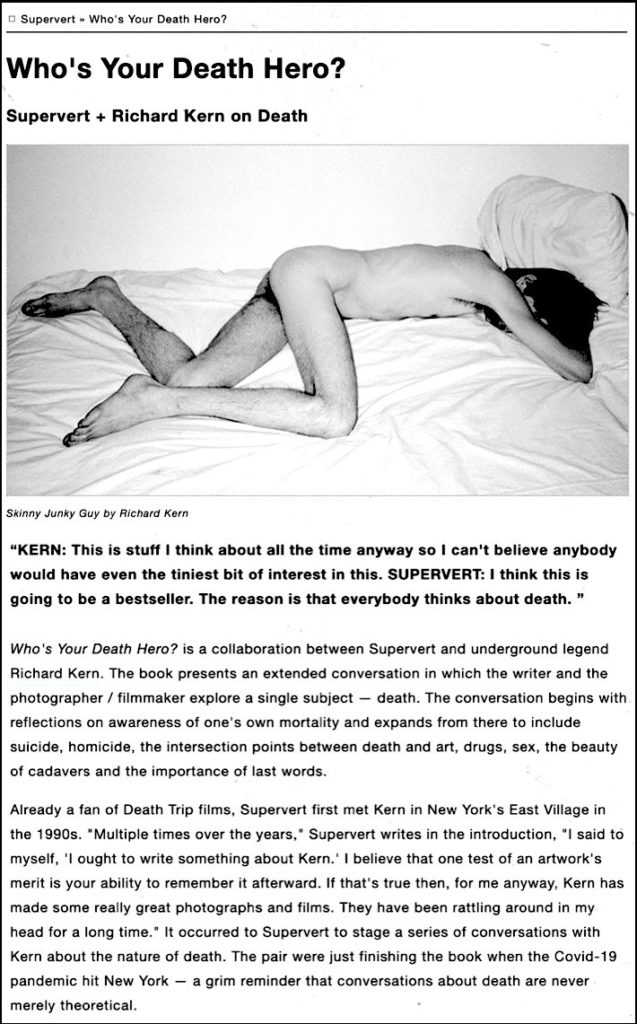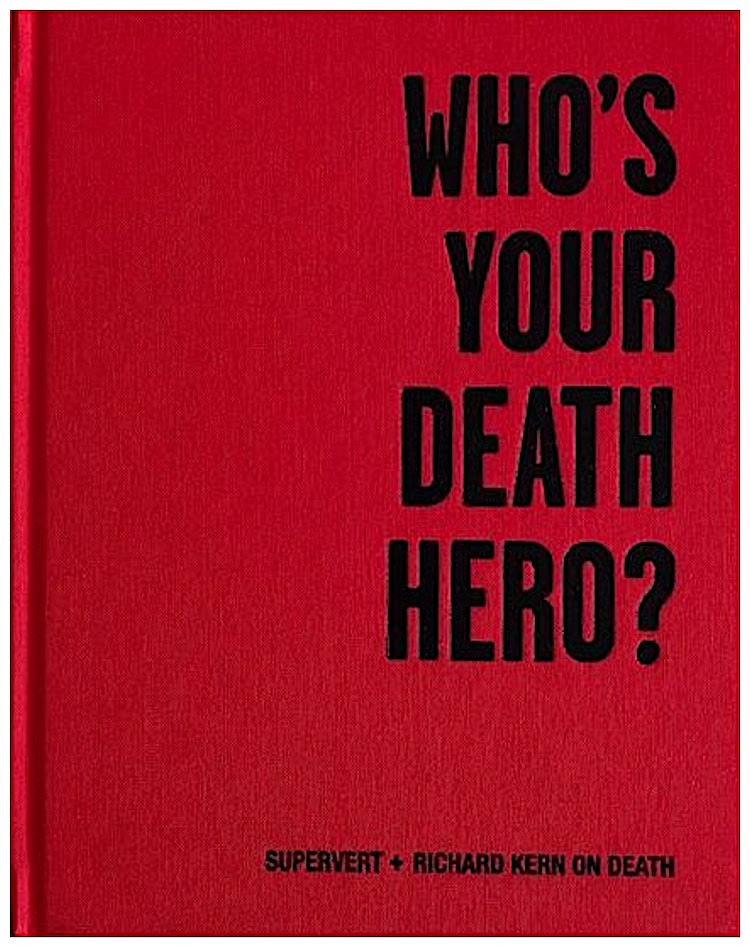Although Albert Camus does not come up in WHO’S YOUR DEATH HERO? — a conversation between the filmmaker Richard Kern and the writer who goes by the name of Supervert — he would be my candidate in answer to the title. Camus’s declaration, “I want to keep my lucidity to the last and gaze upon my death with all the fullness of my jealousy and horror,” conveys precisely what this book is about as if he’d read it himself.
People who do enter the conversation, not as death heroes but as subjects of interest, include John F. Kennedy, Arthur Rimbaud, Chris Burden, Charles Manson, Bonnie and Clyde, Aldous Huxley, David Wojnarowicz, Iggy Pop, Jim Morrison, Oscar Wilde, Marcel Proust, Elvis Presley, Michael Haneke, GG Allin, Robert Morris, Andres Serrano, Joel-Peter Witkin, Carl Andre, Ana Mendieta, Eric Swenson, R. Crumb, Karen Greenlee, Anthony Bourdain, Nick Zedd, Montanna Houston, David Hamilton, Joe Cole, Henry Rollins, Lydia Lunch, Sonic Youth, Marty Nation, Thomas De Quincy, Anatole Broyard, W.C. Fields, Hunter S. Thompson, Elon Musk, Emilio Cubiero, Andy Warhol and his mother, Charles Baudelaire, F. Scott Fitzgerald, Socrates, Plato, Neal Cassady and, let’s not forget, a politician by the name of Budd Dwyer who killed himself on live television.
In case you don’t know who Supervert is, he’s the author of a handful of books that, in his words, “use[s] the techniques of vanguard aesthetics to explore novel sexual pathologies,” books which he designs and publishes himself. Among them are Extraterrestrial Sex Fetish, Necrophilia Variations, Post-Depravity, and Apocalypse Burlesque.
‘The conversation begins with reflections on awareness of one’s own mortality and expands from there to include suicide, homicide, the intersection points between death and art, drugs, sex, the beauty of cadavers and the importance of last words.’
And for those who don’t know who Richard Kern is or why Supervert wanted to have this conversation with him, his introduction to this stunningly executed book explains:
There was a time when Richard Kern’s films were the cinematic equivalent of flyers for punk bands scotch-taped to light posts in the East Village. They were part of the downtown New York environment. Super 8mm tours de force, his Death Trip films were revelations, oracles, mind-blowing spectacles of sex, drugs, and violence. It wouild be no exaggeration to say that Kern, along with Lydia Lunch, Sonic Youth, No Wave, and the East Village gallery scene, formed my notion of what it meant for an artist to inhabit the edge. I admired the darkness and obsession of Kern’s work but I also saw deeper meanings in it — possiblities of creativity and freedom.







der Hein streight auf…..
“what is death after all? A special case of hopelessness, nothing more. Never mind, never mind, never mind. We will learn not to live.”
Sigizmund Krzhizhanovsky — Memories of the Future (1923)